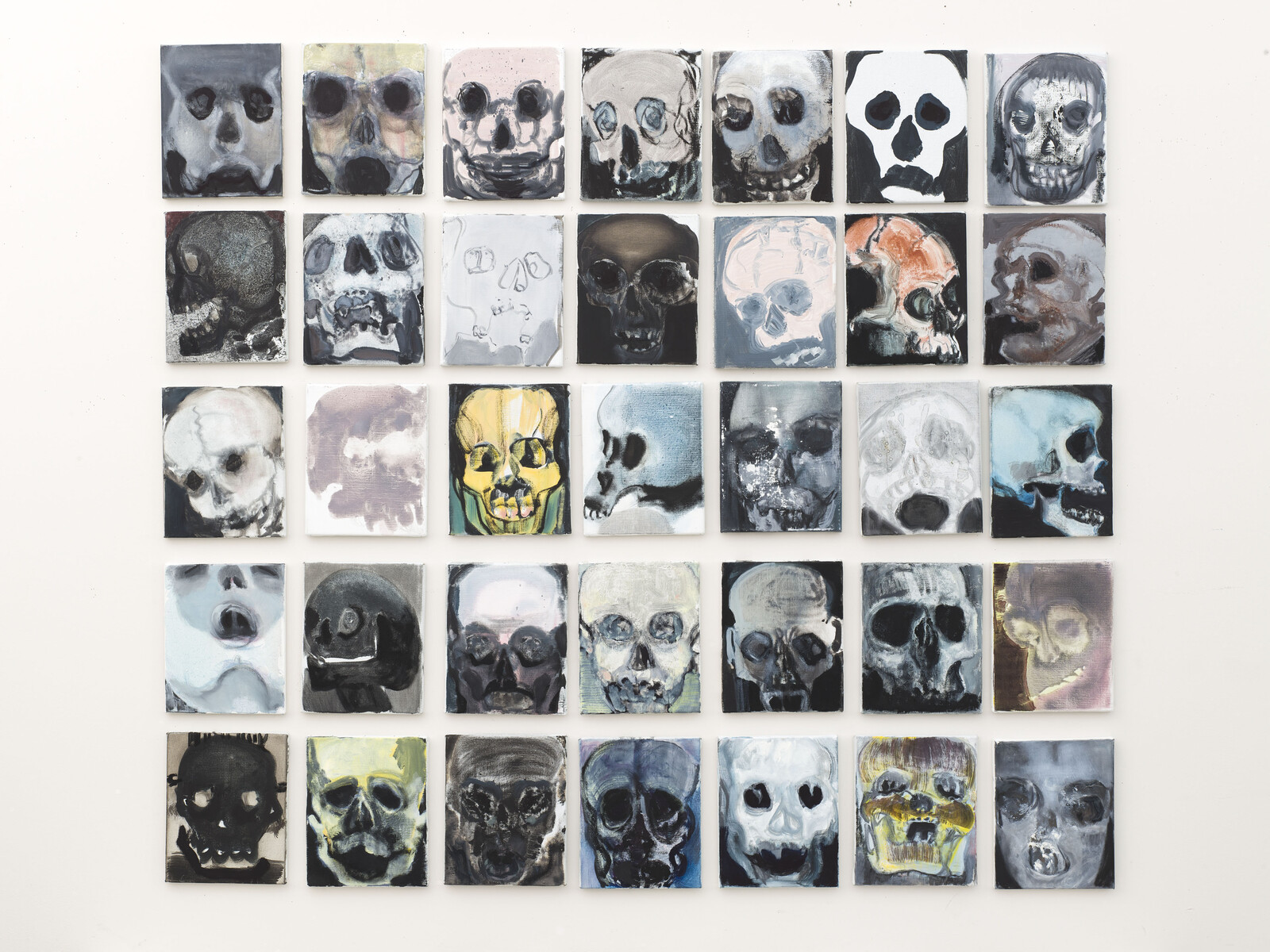Skulls + Hope & Fear
October 19, 2017–January 14, 2018
Albertinum, Dresden
On the occasion of the design of the Altarbild in the Annenkirche in Dresden, which was inaugurated in 2017, the SKD (Staatliche Kunstsammlungen Dresden) show works by Marlene Dumas in two parallel exhibitions at the Kupferstich-Kabinett and the Albertinum.
The Kupferstich-Kabinett presents Marlene Dumas. Hope and Fear, a special selection of 50 works on paper by Marlene Dumas. In her work, which places ink wash and watercolor drawing on the same artistic level as painting, she compresses such existential, human coordinates such as love, death, power and powerlessness into pictures that are always striking and ambivalent. The drawings are loosely based on photographic sources and attain a strong subjectivity as well as universal validity.
Like many of her series, “Skulls,” on display in the Albertinum, is a conceptual work as the impact of the series as a whole is achieved in the sum of varying single images. For Marlene Dumas, as a painter interested in the human condition, the skull motif is fundamental. Hung as a frieze, the work invites viewers to approach the skulls individually, to observe and study them in their singularity and to recognize, eventually, the universal condition that affects every person existentially. Also in the Albertinum, works are on display by Jan Andriesse and Bert Boogaard who collaborated with Dumas on the Annenkirche altarpiece. The presentation of these works provides insight into the individual creative activities of both artists.
Born in 1953 in Cape Town, South Africa, Marlene Dumas has been living and working in Amsterdam for over 40 years and must be counted among the most important contemporary artists. Her paintings are infatuations with the human form—whether whole or fragmented, familiar or peculiar—and its varying approximations to eros and death. She draws, drips, smears, and daubs paint, frequently with her own hands and fingers, to elicit a spectrum of human flesh tones. Often rendered in bleeding lines and stains of wash against spare backgrounds, Dumas presents the unabashed nakedness of inhabited, or once inhabited, bodies in all their bruised particularities.


